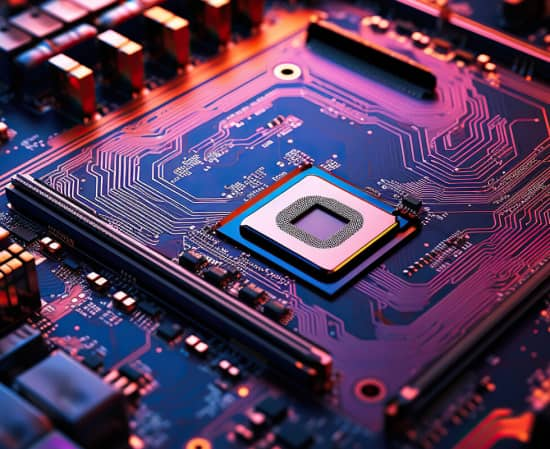Advanced Semiconductor Design and IoT Solutions with Expert Design Verification Services

The semiconductor industry has constantly been at the leading edge of technological development, driving the development of contemporary electronics, automation, and communication systems. As the demand for faster, more efficient, and versatile gadgets grows, semiconductor design and its associated procedures, such as SoC design, ASIC design, and embedded services, are acquiring prominence. Business focusing on these areas, like those providing services outlined on the Vaaluka Solutions platform, are important to forming the future of innovation.
Semiconductor Design: Pioneering Innovation
Semiconductor design forms the backbone of modern electronic devices. The procedure includes producing integrated circuits (ICs) that act as the necessary foundation for microprocessors, memory chips, and other electronic elements. Advanced design approaches have paved the way for smaller sized, more effective devices efficient in fulfilling the demands of contemporary applications, from customer electronics to industrial automation.
Professionals in semiconductor design utilize cutting-edge tools and methodologies to make sure accuracy and performance. This procedure incorporates various phases, including front-end design, RTL coding, and back-end design, culminating in the production of robust and high-performing ICs.
Design Verification: Ensuring Accuracy and Functionality
Design verification is a crucial step in the semiconductor advancement process, ensuring that the design carries out as intended before making begins. This stage includes rigorous screening and simulation to discover and rectify mistakes early in the design cycle. Effective design verification decreases the danger of pricey post-production fixes, boosting general project effectiveness.
Advanced tools and techniques, such as official verification, simulation-based verification, and emulation, are employed to confirm complex SoC and ASIC styles. Companies competent in design verification deliver error-free designs that fulfill strict efficiency standards, making sure reliability throughout varied applications.
SoC Verification and Design: The Heart of Integration
System-on-Chip (SoC) verification and design represent an innovative technique in semiconductor development. By incorporating multiple functions onto a single chip, SoC technology uses unrivaled performance, power optimization, and performance. These characteristics make SoC a perfect choice for applications ranging from smart devices to advanced IoT devices.
SoC verification makes sure that these intricate designs fulfill operational requirements. This involves confirming performance, power consumption, and timing to guarantee optimum efficiency. The process demands a mix of expertise, advanced verification approaches, and a deep understanding of system requirements.
ASIC Design: Tailored Solutions for Unique Challenges
Application-Specific Integrated Circuits (ASICs) are custom-made chips customized for specific applications, providing unrivaled efficiency and efficiency. ASIC design involves producing custom solutions that fulfill the special requirements of industries such as healthcare, automobile, and telecoms.
The procedure of ASIC design incorporates architectural preparation, circuit design, and physical layout. By focusing on application-specific needs, ASIC design delivers extremely enhanced solutions that drive development throughout numerous sectors. Expertise in this area ensures seamless integration and remarkable efficiency in real-world applications.
Embedded Services: Bridging Hardware and Software
Embedded services play a critical function in linking software and hardware, making it possible for smooth interaction and operation in modern-day gadgets. These services incorporate firmware advancement, motorist combination, and real-time os execution, making sure the optimum performance of embedded systems.
The growing adoption of embedded systems in industries like vehicle, customer electronic devices, and health care highlights the significance of trustworthy embedded services. Business with a strong grip in this domain offer extensive solutions that enhance device capabilities and efficiency.
FPGA Solutions: Flexibility in Design
Field Microprocessors Programmable Gate Arrays (FPGAs) use unequaled versatility in design, enabling real-time reprogramming and adaptation. These programmable chips are widely used in applications needing high-speed information processing, signal control, and fast prototyping.
FPGA solutions are important for industries such as aerospace, telecommunications, and defense, where flexibility and efficiency are critical. Proficiency in FPGA design ensures the production of effective, scalable, and robust solutions tailored to specific requirements.
IoT Solutions: Connecting the World
The Internet of Things (IoT) has actually transformed how devices connect and interact, transforming daily items into intelligent, interconnected systems. IoT solutions involve incorporating sensors, microprocessors, and communication modules to make it possible for real-time information collection, analysis, and automation.
Effective IoT solutions need a multidisciplinary method, combining expertise in semiconductor design, embedded systems, and interaction technologies. These solutions empower markets to improve efficiency, lower costs, and improve decision-making procedures through data-driven insights.
Microprocessors: Driving Digital Innovation
Microprocessors are the engines driving modern computing and electronic gadgets. These elaborate chips handle complicated computations, control systems, and information processing, enabling a wide range of applications from smart devices to industrial equipment.
Designing microprocessors needs precision and know-how, focusing on efficiency, power effectiveness, and scalability. Developments in microprocessor design continue to push the borders of what is possible, facilitating improvements in AI, machine learning, and IoT innovations.
Physical Design and Static Timing Analysis (STA): Ensuring Precision
Physical design and static timing analysis (STA) are vital aspects of semiconductor development, making sure that chips meet physical restraints and timing requirements. Physical design involves producing the physical design of the chip, optimizing positioning and routing to minimize delays and power intake.
STA focuses on confirming the timing of signals within the chip, making sure that all components operate synchronously. Know-how in these areas guarantees the production of trusted, high-performance chips capable of satisfying the needs of modern-day applications.
Conclusion: Empowering Innovation Through Expertise
The semiconductor industry prospers on development, precision, and proficiency. Business like Vaaluka Solutions, with their thorough offerings in semiconductor design, design verification, SoC design, ASIC design, embedded services, FPGA solutions, and IoT integration, are pivotal to advancing innovation and forming the future.
Their know-how in microprocessors, physical design, and static timing analysis ensures the development of premium, effective solutions tailored to the unique needs of diverse markets. As the need for smarter, much faster, and more efficient devices continues to grow, such specialized services are important for driving progress and allowing transformative innovations.
Comments on “The Must Know Details and Updates on Embedded Services”